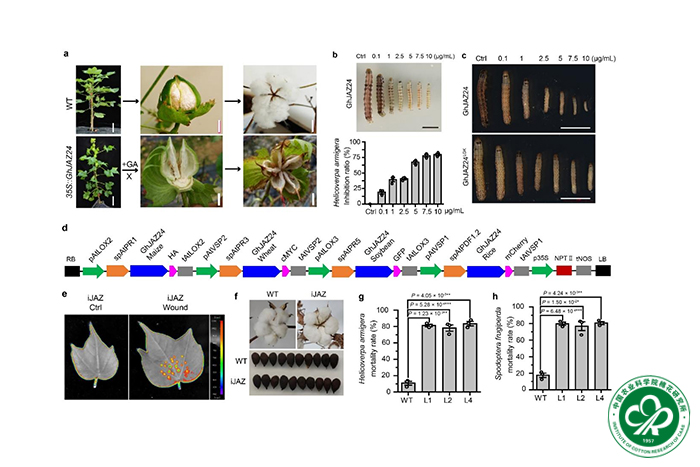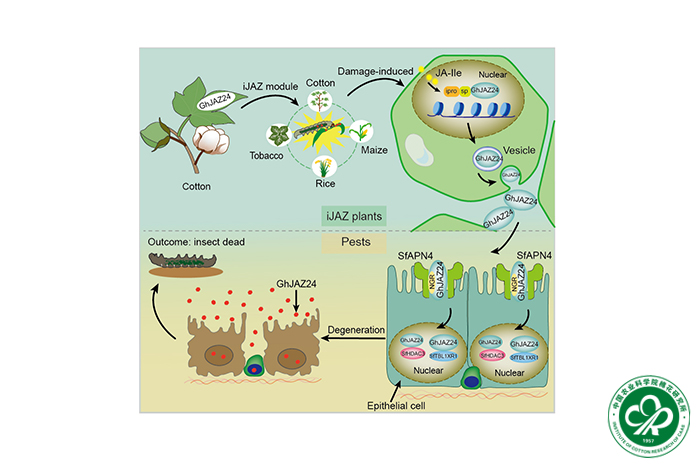- Location : Home» Newsroom
iJAZ-based approach to engineer lepidopteran pest resistance in multiple crop species
On April 29, 2024, the prestigious international academic journal Nature Plants published the latest research from the team of researcher Li Fuguang at the Cotton Research Institute of the Chinese Academy of Agricultural Sciences, titled "iJAZ-based approach to engineer lepidopteran pest resistance in multiple crop species." The article provides a detailed introduction to the molecular mechanisms of a novel and highly effective insecticidal protein discovered in cotton, which has broad application potential, as well as its prospects for application.
In this study,The fall armyworm (FAW) poses a significant threat to global crop production. Here we showed that overexpression of jasmonate ZIM-domain (JAZ) protein GhJAZ24 confers resistance to cotton bollworm and FAW, while also causing sterility in transgenic cotton by recruiting TOPLESS and histone deacetylase 6. We identified the NGR motif of GhJAZ24 that recognizes and binds the aminopeptidase N receptor, enabling GhJAZ24 to enter cells and disrupt histone deacetylase 3, leading to cell death. To overcome plant sterility associated with GhJAZ24 overexpression, we developed iJAZ (i, induced), an approach involving damage-induced expression and a switch from intracellular to extracellular localization of GhJAZ24. iJAZ transgenic cotton maintained fertility and showed insecticidal activity against cotton bollworm and FAW. In addition, iJAZ transgenic rice, maize and tobacco plants showed insecticidal activity against their lepidopteran pests, resulting in an iJAZ-based approach for generating alternative insecticidal proteins with distinctive mechanisms of action, thus holding immense potential for future crop engineering.
This research was supported by the National Key R&D Program of China number 2020YFA0908000 (M.R. and H.M.) and number 2023YFE0199400 (M.R.); the National Science Foundation of China number 31621005 (F.L.), number U23A20182 (F.L.), number U1804231 (F.L.) and number 31972469 (M.R.); the Key project at central government level number 2060302 (M.R.); the Sichuan Science and Technology Program number 2023YFQ0100 (M.R.), number 2023ZYD0089 (M.R.), number 2022YFH0054 (M.R.) and number 2023JDG0028 (M.R.); the Local Financial Funds of Chengdu National Agricultural Science and Technology Center number NASC2023TD08 (M.R.), number NASC2021ST08 (M.R.), number NASC2021PC04 (M.R.) and number NASC2022KR07 (M.R.); the Central Public-interest Scientific Institution Basal Research Fund number S2023011 (F.L.); the Science and Technology Innovation Project of the Chinese Academy of Agricultural Sciences number 34-IUA-02 (M.R.); and the Innovation Program of Chinese Academy of Agricultural Sciences (F.L.).
https://www.nature.com/articles/s41477-024-01682-3

